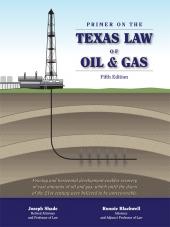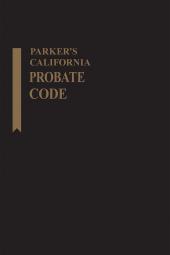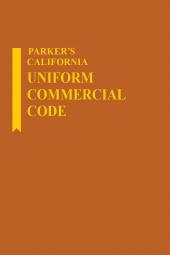Primer on the Texas Law of Oil and Gas
Select a format
 International Order Inquiry
International Order Inquiry
Select subscription type
Terms & conditions
Subscribers receive the product(s) listed on the Order Form and any Updates made available during the annual subscription period. Shipping and handling fees are not included in the annual price.
Subscribers are advised of the number of Updates that were made to the particular publication the prior year. The number of Updates may vary due to developments in the law and other publishing issues, but subscribers may use this as a rough estimate of future shipments. Subscribers may call Customer Support at 800-833-9844 for additional information.
Subscribers may cancel this subscription by: calling Customer Support at 800-833-9844; emailing customer.support@lexisnexis.com; or returning the invoice marked "CANCEL".
If subscribers cancel within 30 days after the product is ordered or received and return the product at their expense, then they will receive a full credit of the price for the annual subscription.
If subscribers cancel between 31 and 60 days after the invoice date and return the product at their expense, then they will receive a 5/6th credit of the price for the annual subscription. No credit will be given for cancellations more than 60 days after the invoice date. To receive any credit, subscriber must return all product(s) shipped during the year at their expense within the applicable cancellation period listed above.
The total price includes the product(s) listed in the Order Form and any Updates for a limited period (minimum period of 30 days) after the order is placed ("Order Window"). Shipping and handling fees are not included in the grand total price.
All shipments may be returned, at subscribers' expense, for full credit of the Price within 30 days of receipt.
Shipments may not be returned, and no credits will be issued, more than 30 days after receipt.
After the Order Window, subscribers will receive notice of Updates along with the then-current grand total price and order process as Updates become available. Subscribers will only be shipped those Updates they specifically request.
Product description
View a sample of this title using the ReadNow feature
The fifth edition of Primer on the Laws of Oil and Gas in Texas is a concise softcover treatise that provides students, landmen, and attorneys with an overview of the most important aspects of the law of oil and gas in Texas. Expert author Joseph Shade summarizes the basics of the law in a simple and uncluttered format that is both approachable and thorough. Inside you'll find valuable discussion and analysis of:
• Fracking
• Leasing
• Title and Conveyances
• Conservation and Pooling
• Defining Property Rights
• Contracts
Don't miss out on one of the most practical guides available to this area of law, invaluable to Texas practitioners and anyone else who needs a concise guide to Texas oil and gas law.
eBooks, CDs, downloadable content, and software purchases are noncancelable, nonrefundable and nonreturnable. Click here for more information about LexisNexis eBooks. The eBook versions of this title may feature links to Lexis+® for further legal research options. A valid subscription to Lexis+® is required to access this content.
Table of contents
Preface
Preface
I. INTRODUCTION
A. Energy
B. Oil and Gas—The Product and the Business
C. The Impact of Property and Contract Law on Oil and Gas Law
D. The Impact of Scientific Advances, Global Energy Markets, Horizontal Development and Environmental Regulations on the Law of Oil and Gas
E. Bottom Line
II. OWNERSHIP OF OIL AND GAS
A. Ownership Prior to Extraction
1. Rule of Capture—Basic Definition and Application
2. Limitations to Rule of Capture—Correlative Rights Doctrine
3. Bottom Line: Rule of Capture—Prior to Extraction
B. Ownership After Extraction
C. Theories of Ownership
1. Ownership in Place Theory
2. Non-ownership Theory
D. Types of Interests Commonly Owned in Oil Gas
1. Introduction—A "Bundle of Sticks"
2. Fee Ownership
3. Surface Estate
4. Mineral Estate—Incidents of Mineral Ownership
5. Interests Created by an Oil and Gas Lease
a. Working Interest
b. Royalty Interest
E. Conservation Laws: A Preliminary Overview
III. THE OIL AND GAS LEASE
A. Nature and Purpose of the Oil and Gas Lease
1. Expectations of the Lessor and Lessee
2. Distinguishing Royalty from Bonus
B. Surface Use Problems
1. The Rule of Reasonable Use
2. Description of Property Leased
3. Other Issues Under the Granting Clause
C. Lease Termination Problems
1. Timeline—the Primary and Secondary Terms
2. Primary Term
a. Payment of Delay Rentals
b. Commencement of Operations for Drilling
3. Secondary Term
a. Meaning of Production
b. Paying Quantities
c. Temporary Cessation of Production
d. Savings Clauses
4. The Obstruction Doctrine
5. Bottom Line: Summary of Lease Termination Issues
D. Implied Covenants
1. The Nature of the Implied Covenants
2. Classifying the Implied Covenants
3. The Reasonable Prudent Operator
4. Principal Areas of Implied Covenant Litigation
a. Drainage
b. Reasonable Development and Further Exploration
c. Marketing
d. Proper Operation
5. Limiting Application of the Implied Covenants by Express Lease Clause
6. Application of Implied Covenants to Horizontal Development
E. Royalty Disputes
1. General Considerations
2. The Lease Royalty Clause
a. Market Value Royalty Litigation
b. Take or Pay Litigation
3. The Implied Covenant to Market in Royalty Disputes
a. Within Reasonable Time
b. At a Reasonable Price
c. Post-Production Costs
d. Limiting Application of Implied Covenants by Express Lease Clauses
4. The Effect of Division Orders on Royalty Payments
5. Remedy for Nonpayment of Royalty
F. Modification of Traditional Lease Form to Facilitate Horizontal Development
G. Acquiring Drilling Rights in Foreign, Federal, or State Lands
1. Foreign Governments
2. The Federal Government
3. State of Texas Lands
IV. TITLE AND CONVEYANCES
A. Introduction
B. Distinguishing Mineral Interests from Royalty Interests
1. Nature of the Interests
2. Creation of Mineral Interests and Royalty Interests
a. Legal Consequences of Distinction
b. Relative Interpretative Factors—In General
c. Using the Word "Royalty" in the Grant or Reservation
d. Stripping Away the Attributes of Mineral Ownership
e. Parol Evidence in Oil and Gas Cases
3. The Bottom Line
C. The Meaning of Minerals
1. Introduction
2. The Texas Meaning of "Other Minerals"
a. History
b. Definitions
c. Applications
d. Bottom Line
3. Ownership of Coalbed Methane Gas
D. Divided Ownership of Minerals
1. Concurrent Ownership—Co-tenants
a. Developing and Non-consenting Co-tenants
b. Applications
2. Successive Ownership—Life Tenant and Remainderman
a. The Leasing Issue
b. Accounting Issues
E. The Executive Right
1. Meaning of the Executive Right
2. The Executive's Duty to Holders of Non-Executive Interests
F. Term Interests
G. Size of the Mineral or Royalty Interest Conveyed
1. The Double Fraction Ambiguity
2. The Land Described/Land Conveyed Ambiguity
3. Distinguishing Grants "of" and "out of" a Fractional Interest
4. Conveyances Subject to Existing Leases
5. Over Conveyances—The Duhig Rule
6. The Non-apportionment Rule
H. The Process of Judicial Interpretation—Canons of Construction
1. Judicial Interpretation
2. Canons of Construction
I. Resolving Title Issues
1. The Title Examination Process in Oil and Gas
2. Title Opinions
3. Malpractice Liability
4. Curing Defects in Title
V. TRESPASS AND ADVERSE POSSESSION
A. Trespass
1. Trespasses Resulting from Drilling
a. Surface Trespass
b. Drilling Resulting in a Dry Hole
c. Drilling Results in Production
d. Trespass Resulting from Slant Drilling
e. Trespass Resulting from Operations for Horizontal Wells
(1) Drilling Horizontal Wells Under Unleased Tracts
(2) Hydraulic Fracturing Operations for Horizontal Wells
2. Geophysical Trespass
3. Suits Based on Legal Theories Other than Trespass
4. Considerations Relative to Choice of Remedy
B. Adverse Possession
1. In General
2. Adversely Possessing the Mineral Estate
a. The Unsevered Rule
b. The Severed Rule
3. The Scope of Possession
VI. CONSERVATION, POOLING, AND UNITIZATION
A. Conservation
1. In General
2. Statewide Spacing Rules and Production Allowables
a. Statewide Spacing Rules
b. Statewide Density Rules
c. Exception to Spacing and Density Rules
d. Production Allowable (Prorationing)
3. The Small Tract Problem
a. Constitutional Issue—the Exception to Prevent Confiscation
b. The Voluntary Subdivision Rule
c. The Allowable Issue
4. Environmental Regulation
a. In General
b. The Well Plugging Rule
5. Environmental Regulations—The Well Plugging Rule
B. Pooling and Unitization
1. Pooling
a. Compulsory Pooling
(1) Forced Pooling in Oklahoma and Most Other States
(2) Forced Pooling in Texas (the Mineral Interest Pooling Act)
b. Voluntary Pooling
(1) Why Would the Lessor and the Lessee Agree to Pool?
(2) How to Accomplish Voluntary Pooling?
(3) Effect of Pooling
2. Unitization
Appendix A—Glossary of Oil and Gas Terms
Appendix B-1—Form of Oil, Gas and Mineral Lease
Appendix B-2—Traditional Lease Form with Modifications to Accommodate Horizontal Development
Appendix C—Technical Supplement
Index
 Lexis Nexis
Lexis Nexis 


